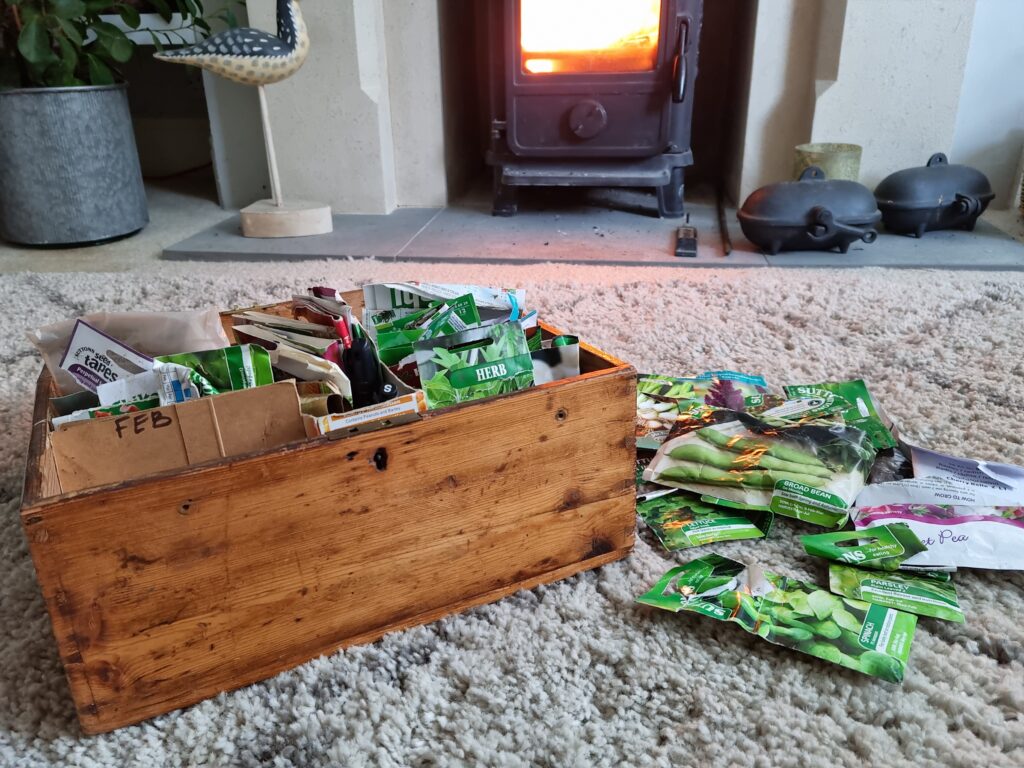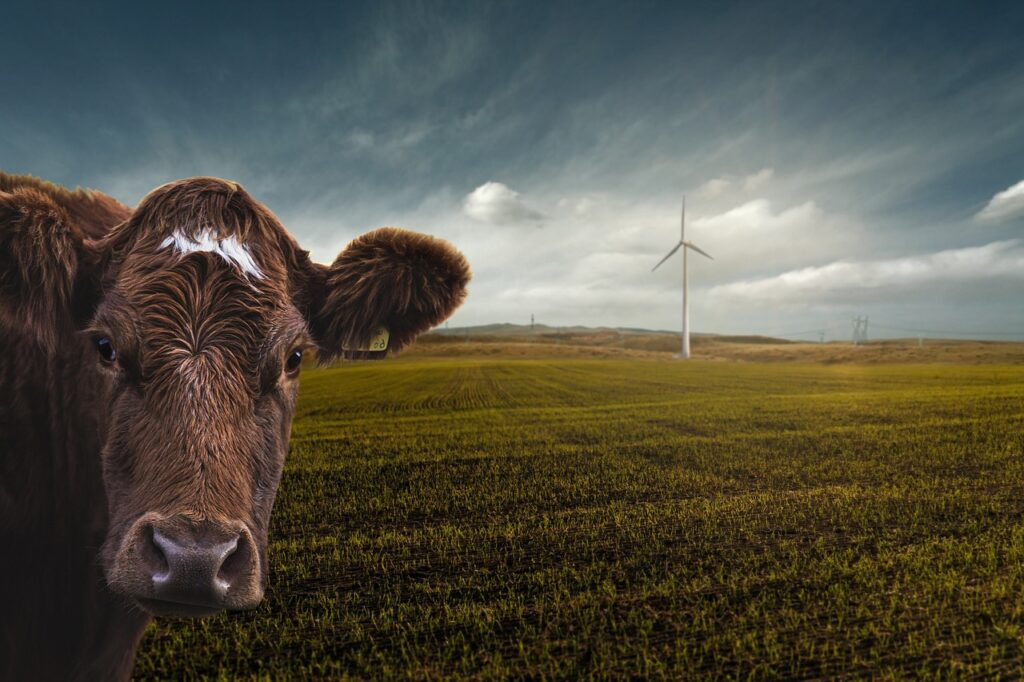- What Is No Dig Gardening?
- The science bit- What is soil?
- What are the pros?
- What are the cons?
- Summary
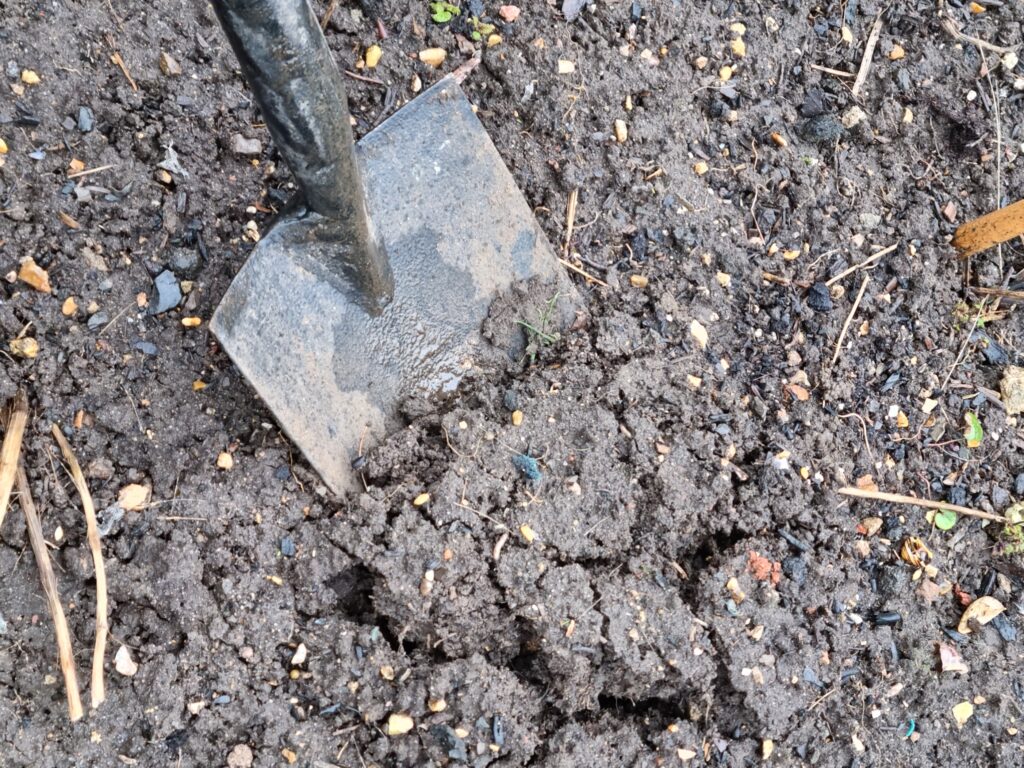
Learn All About No-dig Gardening, This Eco-friendly And Sustainable Organic Gardening Method.
As you read about organic gardening, you will no doubt come across the term ‘no dig gardening’ or ‘no till’ and may wonder what it means.
No dig gardening is not complicated, but it does depart from some ‘traditional’ gardening lore. Normally you would dig and turn over the soil in the veg beds in the autumn to help break down the soil, incorporate compost or manure into the ground and generally have a good workout and feel satisfied that you have done a good job. It is now increasingly apparent that this is detrimental to the soil structure, the environment and the fertility of the ground. No dig gardening instead is now recognised to be the best way to maintain a healthy and productive organic garden.
What Is No Dig Gardening?
No dig gardening is a term that is largely self-explanatory. You simply don’t need to dig or till the soil.
Instead, you lay approximately a 2 to 5cm (1 to 2inch) layer of organic compost (preferably homemade) on top of the soil once a year, and when you re-plant, if it needs topping up. Then you just let nature do the work for you. This mimics nature where leaves, fallen branches and animal waste is pulled down into the soil by worms and broken down naturally.
The goal is to leave the soil as undisturbed as possible. This prevents the soil structure from being destroyed and leaves all the soil life intact.
The science bit- What is soil?
We are generally most concerned with the topsoil. This is the top layer where most plants grow. Topsoil is made up of a mixture of:
- Organic matter
- Minerals
- Living organisms
- Air
- Water
The proportions of each of these elements are crucial to the health of the soil. Nature normally takes care of this on its own but when we start intensively farming or generally disturbing the soil, the balance is lost. This results in poor productivity and dropping yields with a dependency on artificial fertilisers.
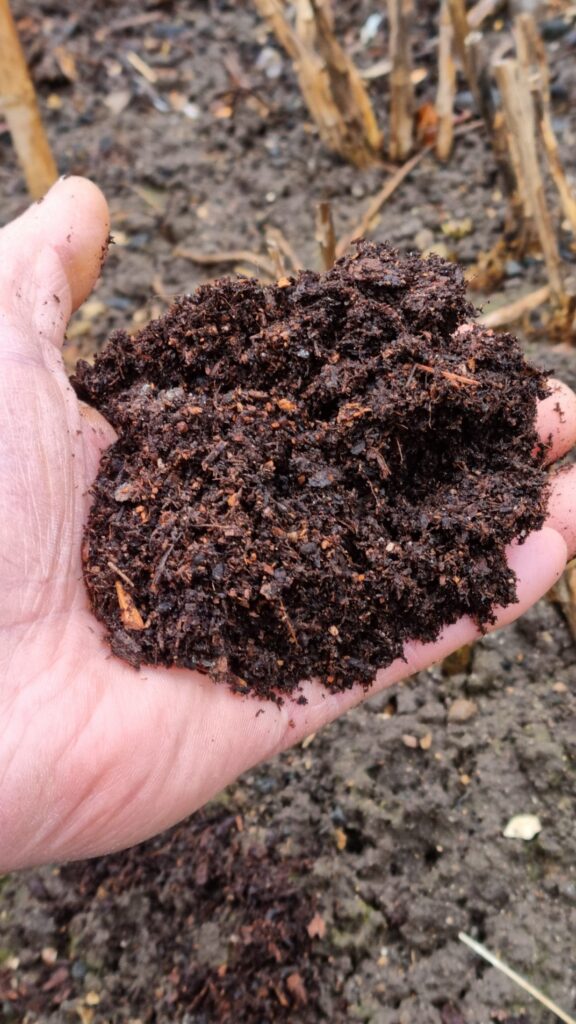
Organic matter
If you are new to gardening, you might not be familiar with the term organic matter.
Organic matter is material containing carbon that derives from living things. In general terms, it is dead plant or animal matter, and animal waste. [source] For example, it could be:
- Grass clippings or straw
- Kitchen vegetable peelings
- Cardboard and paper
- Leaves
- Wood chippings, logs or branches
- Animal waste
It might be helpful to think about organic matter as “nature’s recycling”.
Adding organic matter to the soil surface in your garden growing areas mimics the natural processes which take place in nature on a forest or woodland floor.
The leaves fall, and begin to decay, and the complex web of soil life returns the nutrients back into the ground.
Why don’t we do this in our gardens and let nature do its thing? The problem is that you end up with partially broken down organic matter that is hard to sow and plant into. The initial decomposition process also has the negative effect of removing nitrogen from the soil (an essential element for plant growth) and doesn’t release it until later on. This is why we always use well rotten manure or compost when mulching the ground in the no dig method.
Minerals
All soils consist of three main minerals They are clay, silt and sand. The proportions of these dictate the structure of your soil. Largely sandy soils tend to be well-drained, warm up quickly at the beginning of the year and they are easy to work. The downside is that they don’t hold many nutrients and dry out quickly. On the other end, clay soils hold a lot of nutrients, and retain moisture but tend to take longer to warm up in the spring and they are harder to work.
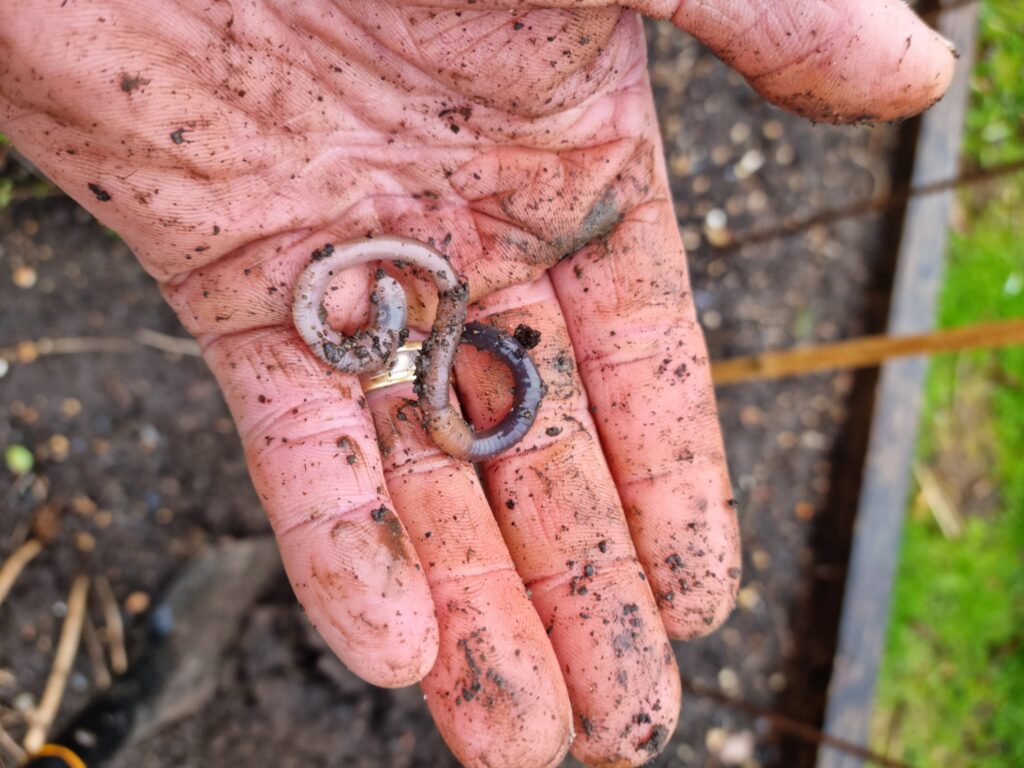
Living organisms
Soil life is at the core of how we now measure the health of the soil. Soil is made up of a complex mix of earthworms, invertebrates, microscopic bacteria and fungi which we now know are essential to healthy soil. In one teaspoon of healthy soil, there are likely to be around 1 billion individual microscopic single-cell bacteria and around 10,000 different species (source). In one square metre of soil, there are likely to be on average about 200 earthworms (source). All these organisms do the heavy lifting breaking down the organic matter and incorporating it into the soil whilst purifying the environment from pollutants, regulating carbon storage stocks and helping to protect plants from diseases.
Air
Aerated soils are good healthy soils because they allow more oxygen to be available to the plant roots and microbes to function properly. Air voids also enable water to move through the soil better. Sandy soils tend to have more air voids but adding well rotted organic material to any soil helps to create a more open structure which is great news.
Water
Adding organic matter to the soil also improves the water-holding capacity of the ground. It’s like a big sponge which is exactly what we need to grow healthy plants. It means less hand watering and, for those with clay soils, less likelihood of big cracks occurring in dry weather.
What are the pros of employing the no dig system?
Healthier plants – With the no dig system, there is often no need to add fertilizers because of the beneficial effects of the compost being broken down. In fact, it is better not to do this since fertilizers can have a detrimental effect on the essential microbes and excess fertiliser can leach into the soil water.
Increased yields – More produce has been shown to be grown than traditional dig systems as proven by Charles Dowding.
Earlier harvests – No dig garden soils warm up quicker than dug garden soil in the spring and late winter. This enables crops to be planted earlier in the growing season and gives you time to grow a second crop in the same space once the first crop is cleared.
More carbon captured in the soil – when soil is disturbed, huge amounts of CO2 and other greenhouse gases are released. So no digging is definitely better for the environment.
Better water holding capacity – more organic matter in the soil means more water holding capacity as it acts a bit like a sponge.
No digging – so no more back breaking work digging beds by fork.
Less watering – Organic matter holds more water but it also encourages beneficial Mycorrhizal fungi which work with plants in a symbiotic way. The fungi provide an extension to the plant roots enabling the uptake of more moisture and nutrients and the fungi benefit by using carbon produced by the plant through photosynthesis (source).
Fewer weeds – by mulching with compost or other organic material, weeds are less common andthey are easier to remove from the soil.
Less leaching of nutrients or soil erosion – With the soil being constantly covered with mulch, the soil surface is protected from heavy downpours which can wash away any valuable nutrients from the soil.
Less time needed in the garden working- More time to relax and enjoy it.
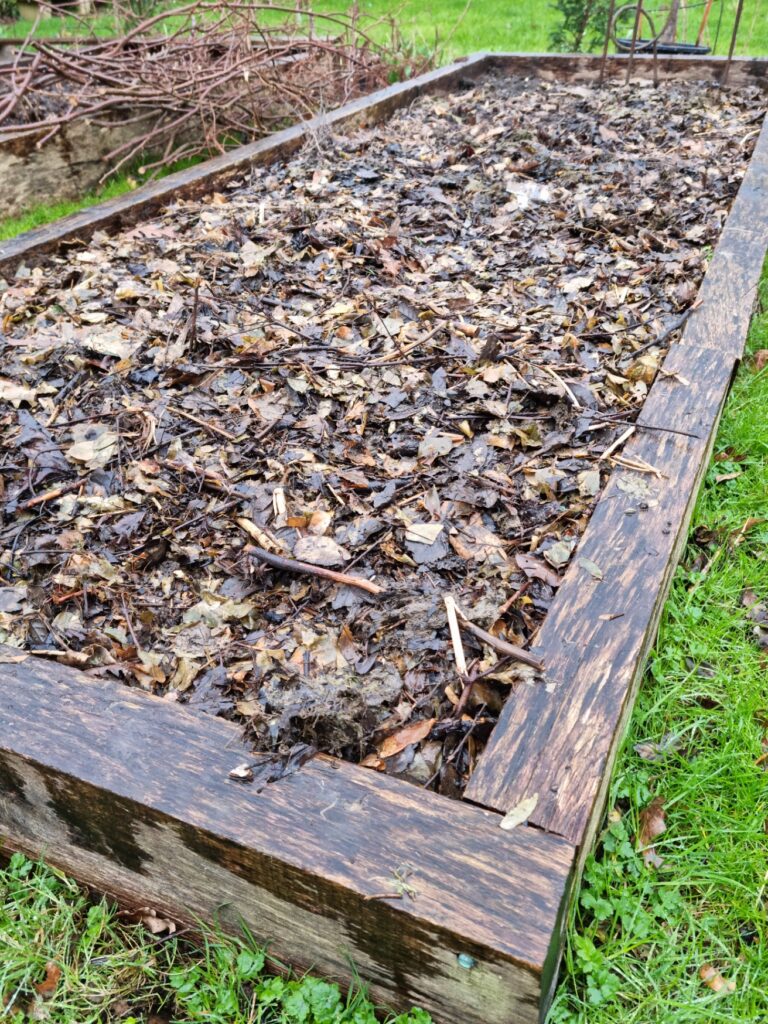
What are the cons with the no dig system?
Lots of compost needed – Its difficult to obtain enough compost on a budget for the garden requirements, especially in the first year when you need a bit more.
Quite a lot of shovelling and borrowing of compost is required at times. It’s certainly easier than digging the ground though.
Sometimes it feels like cheating!
In Summary
As you can see, the pros far outweigh the cons. I will certainly be taking up this system fully this year. We rely on the soil for so much, and we should always be sure to take the best care of it. We are after all only stewards of the land.
Happy gardening.

